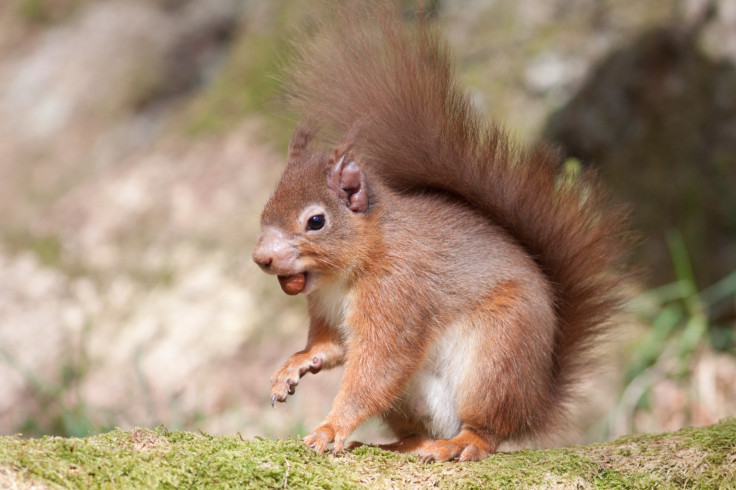British red squirrels are suffering from medieval human leprosy
The discovery could help medical researchers tackle leprosy in humans.
Red squirrels on Brownsea Island on the south coast of England have the same strain of leprosy that was prevalent in medieval England, biologists have found.
Squirrels with leprosy develop swellings on their ears, muzzles and feet and suffer hair loss. Of the 25 squirrels sampled on Brownsea Island, all of them had leprosy bacterium present in the skin.

The chances of people catching leprosy from the Brownsea Island squirrels is low, the study authors say.
The study, published in the journal Science, found that red squirrels on Brownsea Island on England's south coast have the same strain of leprosy that historically infected people in the UK and that still infects hundreds of thousands of people worldwide.
Red squirrels are not the only animals to harbour this strain of leprosy – the nine-banded armadillo native to the southern US also have the same strain. The bacterium that causes leprosy – Mycobacterium leprae – cannot be grown in a dish, making it hard for medical researchers to study. Finding another living reservoir of leprosy bacteria could help researchers with the eradication of leprosy in humans.

Ending leprosy in humans
More than 200,000 new cases of leprosy are recorded in humans each year, according to the World Health Organisation. Study author Anna Meredith of the Royal (Dick) School of Veterinary Studies at the University of Edinburgh says that the study's findings open up many more questions about where people are acquiring leprosy from.
Leprosy is a treatable disease and relatively easy to diagnose, Meredith says, but it's still causing major problems in some parts of the world. Meredith argues that it is worth looking more closely at the wildlife in such countries in order to understand how the disease spreads.
"We always thought it was spread human to human, but this now raises many more questions about the possibility of environmental sources of the bacteria, including animals," Meredith told IBTimes UK.
However, Meredith says that red squirrels in the UK do not appear to be passing their leprosy on to humans. "Obviously it's very strange that we've seen leprosy in squirrels in the UK where we don't have human leprosy. Now we have to look at countries where leprosy is endemic and still a problem in humans. Is there an equivalent reservoir there contributing to the fact that leprosy is still a problem?"

Not squirrels' biggest problem
Brownsea's wild red-squirrel population has been living with leprosy for at least 40 years, according to Angela Cott, National Trust general manager for Brownsea Island. There are less than 140,000 red squirrels left in the UK. Their main threat is not leprosy but the 'squirrelpox' virus that is carried by grey squirrels. This virus is much more deadly than the leprosy bacterium
"Leprosy is a very different picture to the squirrelpox virus – that wipes out squirrels very, very quickly, with a massive mortality rate. Usually within a week or two or developing signs they'll be dead," says Meredith. "Leprosy doesn't seem to be behave like that, it's much more chronic and a very different type of disease. We simply don't know what impact it's having on the red squirrel population."
The researchers believe that the disease can eventually be deadly to squirrels, although the details of how the course of disease happens in squirrels is still largely unknown, Meredith says. The disease is could take years to develop fully in some cases, she says, although it has also been noted in young adult squirrels.
Wanted alive
Red squirrel vital statistics
Length: 180 - 244mm and tail about 180mm
Weight: Adults 280-350g
Lifespan: About 6 years
Numbers in Britain: About 120,000 in Scotland, 3,000 in Wales and 15,000 in England
Source: Forestry Commission England
This could help to explain why Brownsea Island has had a fairly stable population of red squirrels over the last 50 years, even though they have most likely had leprosy endemic in the population during that time. "Leprosy is an issue from the individual animal's point of view, but at a population level it doesn't seem so far to be having anything like the impact of squirrelpox."
The squirrels studied in this research were found dead and assessed by post-mortem. Meredith says that next will be a study of live squirrels, in which the researchers will attempt not to harm the endangered species. The project will collect blood and hair samples and microchip the animals to allow the researchers to track the animals and see how the disease progresses.

© Copyright IBTimes 2025. All rights reserved.






















